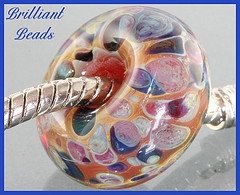
A Brief History of Jewelry Boxes
For centuries, elaborate jewelry boxes have been created by skilled craftsmen. In some cases, the boxes have been crafted to be as precious as the treasures they store.
During the Industrial Revolution, the concept of mass production enabled the newly established middle class of society to purchase items such as jewelry boxes, in addition to other luxury items. As jewelry boxes were being manufactured in bulk, the cost involved to produce them, as well as the cost to the consumer, was considerably less. What was considered a luxury item could now by enjoyed by the masses.
In the early 1900s, housewives began receiving mail order catalogs from companies such as Sears, Wards and Marshall Fields. Now, the average family could purchase a jewelry box whether they lived in Topeka, Kansas or New York City. In the meantime, jewelry stores displayed the trendiest and loveliest jewelry box designs. They came in a variety of sizes and styles – from diminutive ring boxes to boxes large enough to store a lady’s gloves.
For the construction of jewelry boxes, antimonial lead was the most common base metal used. In the beginning, jewelry boxes were electroplated with copper and finished with either gold or silver. Over time, however, enamel finished boxes proved to last longer than gold or silver boxes. The decorative storage cases were finished with a variety of touches, including French Bronze, Roman Gold, Pompeian Gold, French Gray, and Parisian Silver. In the mid-1900s, ivory finishes were introduced.
During the early 1900s, Art Nouveau was all the rage and so it was also the most desirable decorative style for jewelry boxes. This romantic design was famous for its flowing, asymmetrical lines containing motifs related to nature. Artists also employed the use of flowers on Art Nouveau-designed jewelry boxes. For instance, the four-leafed clover represented good luck; daisies were used for innocence; and roses symbolized love and beauty.
A variety of American manufacturers produced and designed jewelry boxes. They included Jennings Brothers, Kronheimer and Oldebusch, Benedict, NB Rogers, and The Art Metal Works. Brainard and Wilson patented the Nouveau jewelry box designs, while Weidlich Brothers had patents on their Colonial designs. The golden age of jewelry boxes was represented from 1904 to 1918, during which there was a mass production of jewelry boxes. Gold and silver boxes were very common. Today’s silver-plated versions are considered antique jewelry boxes and are very rare. Ivory-finished boxes, although designed later, are also considered rare and hard to find. Because of their durability, the boxes have often been passed down through family generations.
What to Consider When Purchasing a Jewelry Box
More than just a box, a jewelry box can be an ornate work of art designed to store and protect precious jewels, necklaces, bracelets, and other valuable treasures. A jewelry box can also signify wealth, heritage and sophistication. Set within its beautiful confines, a simple piece of jewelry is greatly enhanced and accentuated. Therefore, the design and make of a jewelry box is important in creating the ideal ambiance for your pieces. Following are a few things to keep in mind when choosing the perfect jewelry box:
Keep your entire jewelry collection in mind. Consider what pieces make up your jewelry collection. Are there more rings than bracelets? Do you own more silver than gold jewelry? Choose a jewelry box that fits the type of jewelry in your collection and accentuates the quality of your pieces.
Choose a box that has enough room for each piece you have. Select a jewelry box that allows ample room for each piece in the collection. Stored too closely together, pieces of jewelry can rub against one another, diminishing their appearance and value.
Consider two boxes rather than one. Depending on the size of your jewelry collection, it might be a good idea to separate the pieces into two boxes. For example, if you own equal amounts of gold and silver pieces, choose two boxes, one for each type. Trying to force an entire collection into one box can make it appear cluttered and mismatched.
The choice of a jewelry box should depend on your jewelry collection. Before purchasing a box, consider the look, size, and variation of your pieces. Choose a jewelry box that fits well with your collection as a whole.
About the Author
Lewis Jewelers is proud to carry the full line of
Pandora Jewelry
. Pandora bracelets, Pandora charms and Pandora beads are only a part of the collection. For more information, Lewis Jewelers, 2000 West Stadium Blvd., Ann Arbor, Michigan, 48103, 877-88-LEWIS or visit the website.